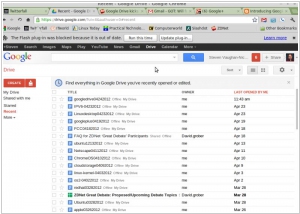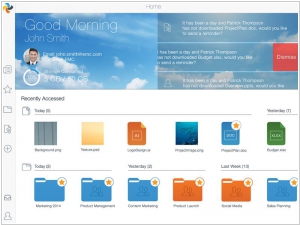Google Drive vs Syncplicity
August 26, 2023 | Author: Michael Stromann
Google Drive and Syncplicity are both cloud-based file storage and collaboration platforms, but they have different features and target different user needs. Google Drive is a widely used solution that offers a comprehensive suite of productivity tools, including file storage, document editing, and collaboration features. It integrates seamlessly with other Google services and provides real-time collaboration, extensive sharing options, and robust search capabilities. Google Drive is suitable for personal use, small teams, and businesses that prioritize collaboration and integration with the Google ecosystem. Syncplicity, on the other hand, is a file sync and share solution that focuses on simplicity and security. It offers features like file synchronization, mobile access, and basic collaboration capabilities, with a strong emphasis on data protection and compliance. Syncplicity is often preferred by organizations that require strict control over their data and need advanced security features.
See also: Top 10 Cloud Storages
See also: Top 10 Cloud Storages
Google Drive vs Syncplicity in our news:
2022. Google is adding new Drive, Docs, Sheets, Slides and Keep optimizations for tablets
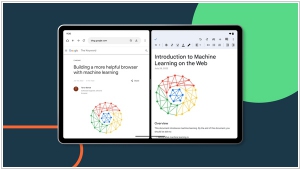
Google unveiled Android 12L earlier this year, aiming to enhance the usability of tablets. During the I/O conference, the company revealed its intention to optimize over 20 Google apps for larger screens. Today, Google has introduced several new features for Drive, Docs, Sheets, Slides, and Keep, taking a step towards fulfilling this commitment. The most noteworthy feature announced is the ability to effortlessly drag text or images between two Workspace apps that are open side-by-side. Google highlights that users can now drag content from apps like Chrome or Sheets and drop it directly into an existing document or spreadsheet cell. Additionally, in Google Drive, files can be swiftly uploaded by dragging and dropping them into the app. Furthermore, links to Drive files can be easily added by dragging the file into an open app like Keep.
2018. Google Drive added comments to Microsoft Office files
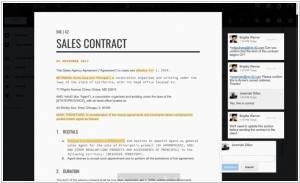
Google Drive has introduced a convenient solution for teams and agencies seeking to collaborate seamlessly using a combination of G Suite and Microsoft Office. Now, Google Drive users can easily add comments to Office files, PDFs, and images directly within the Drive preview pane. This eliminates the need to rely on external tools like Microsoft Office or Acrobat Reader, as well as the hassle of converting files to Google Docs, Sheets, or Slides formats. While it may not provide real-time commenting like G Suite or Office 365, this feature offers a significant improvement by eliminating the constant need to convert documents between Office and G Suite.
2017. Google launches Drive File Stream to replace the Google Drive desktop app for G Suite users
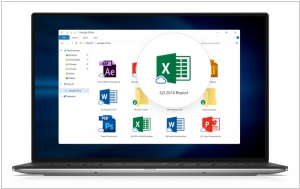
Google has introduced a new desktop application, called Drive File Stream, for Google Drive users who are subscribed to G Suite. This application will replace the existing Google Drive desktop app, which is scheduled to be discontinued next year. One notable distinction between the consumer and enterprise versions is the inclusion of administrative control features. Starting today, company IT departments will find the Drive File Stream settings within the Admin Console for their G Suite edition. This enables them to customize and deploy the solution within their domain, including options to enable synchronization, define installation preferences, disable automatic updates through Google Update, and manage other relevant configurations.
2017. Google Drive gets a new Backup & Sync desktop app
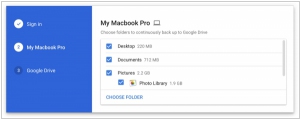
Google has unveiled its latest application, Backup and Sync, designed to facilitate the effortless backup of files and photos on both Mac and PC platforms. This utility serves as a replacement for the older Google Photos desktop app and the client applications of Google Drive. The newly introduced tool offers a user-friendly interface, where users can sign in to their Google account and select the folders they wish to continuously back up to Google Drive. Apart from backing up files stored on desktop computers, this software also allows users to back up photos from USB-connected devices like cameras and SD cards. As for business users, Google has plans to launch a dedicated enterprise solution called Drive File Stream, which will be made available to all G Suite users later this year.
2017. Google updated Drive with a focus on its business users
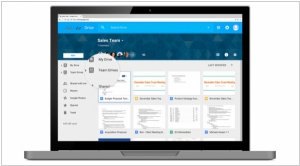
Google has implemented several updates to enhance its online file storage service, Google Drive, with a focus on improving its functionality for business and enterprise users. The primary emphasis is on providing a better service for teams within these organizations. As part of this effort, Google has made Team Drives available to all users after a preview phase that lasted approximately six months. Throughout the preview period, the team identified and addressed various issues, particularly related to permissions, to ensure a smooth general launch. Now, businesses of all sizes can leverage Team Drives for efficient file sharing within their enterprise. Another noteworthy addition is the general availability of Google Vault for Drive, which equips large enterprises, particularly those operating in regulated industries, with the necessary tools for archiving and data retention. This feature caters to the specific needs of these businesses, offering enhanced control and compliance capabilities. By prioritizing the requirements of business and enterprise users, Google Drive continues to evolve as a comprehensive and reliable file storage solution for organizations of all sizes.
2016. Google Drive gets intelligent search
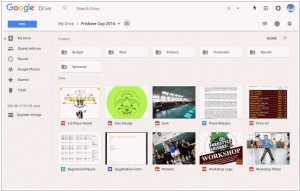
Google Drive is introducing an enhanced search capability that incorporates natural language processing and offers autocorrection suggestions for misspelled search terms. This means that when searching for documents, you can use phrases like "find my budget spreadsheet from last December" or "show me presentations from Anissa." As this feature is utilized more frequently, the search results will become increasingly precise. This development likely indicates that Google will soon integrate a voice interface into Google Drive as well.
2014. Google Drive adds OpenDocument support, sending files as attachments
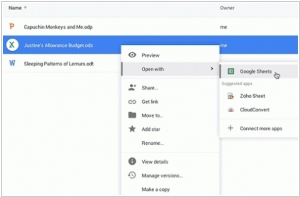
Google is introducing a series of updates for its cloud-based storage service, Google Drive. One notable enhancement is that Gmail users can now share Drive documents as attachments within email files. This feature proves beneficial when the recipient lacks permission to access the file on Google Drive or if you plan to delete the file from Drive in the future. Furthermore, Google has added support for importing the three major ODF (Open) file formats: .odt for documents, .ods for spreadsheets, and .odp for presentations. This addition simplifies the process of working with files from other open-source productivity suites like LibreOffice. Additionally, Android users of Drive can utilize voice commands within the Google search app to search for files. For example, a user can say, "OK, Google — search for holiday letter on Drive," streamlining the file search process.
2014. Google Drive for desktop now allows to launch files in preferred applications
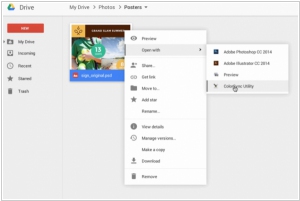
File storage service Google Drive has introduced a convenient feature that enables users to effortlessly launch their cloud-stored files with their preferred desktop applications. This functionality can be accessed through an optional Chrome extension. Once the extension is installed, users can simply right-click on applications stored in Google Drive and choose to open them using compatible applications installed on their computer. To utilize this feature, users must have the latest version of the Drive app installed on their Mac or PC, and their files should be synchronized to their computer. According to Google, the rollout of this new extension will take place gradually over the next few days.
2014. EMC Syncplicity cuts prices
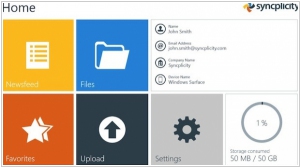
According to industry leaders Forrester and Gartner, EMC's Syncplicity is regarded as the top-notch offering in the Enterprise Sync and Share market. However, EMC aims to eliminate any potential barriers that may prevent companies from fully embracing its comprehensive solution. As part of this effort, EMC has increased storage limits across all its offerings. Individuals with free personal accounts can now enjoy storage capacity of up to 10 GB without incurring any charges. Subscribers to the business edition have a generous allocation of 300 GB + 5 GB per user, with the option to obtain additional storage at a reasonable price. Users of the departmental edition are granted up to 1 TB of storage without incurring extra fees. Furthermore, the storage capacity for the Enterprise edition remains unlimited, as it has always been.
2014. Syncplicity launches iPhone app expanding virtual private cloud capabilities
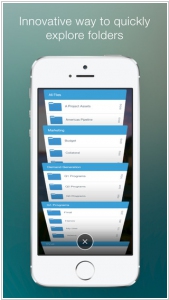
The cloud-based file management service, Syncplicity, has recently launched a new iPhone app that offers mobile accessibility to all user files and folders. This app not only provides convenient access but also fulfills crucial business requirements such as security, backup, and versioning. Users can now effortlessly browse, share, and manage their files and folders directly from their iPhones, regardless of whether the files are stored on their PC, Mac, SharePoint servers, corporate network, or in Google Docs. This universal file access on the iPhone encompasses shared Syncplicity folders designed for collaboration within businesses or for personal sharing. With Syncplicity, users can securely access any file and folder at any time, eliminating the need to rely on email attachments or carry laptops and use VPNs to ensure file access while on the move. Syncplicity also prioritizes mobile safety by incorporating built-in policy and permission controls, remote wipe capabilities, and comprehensive end-to-end encryption for all transferred and stored data on the Syncplicity service as well as on the mobile device.

